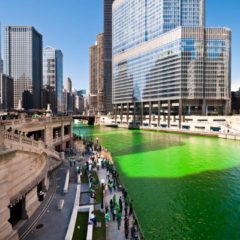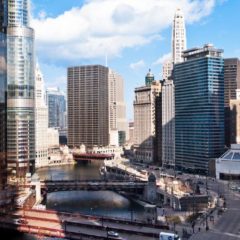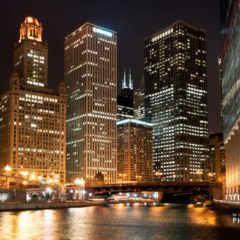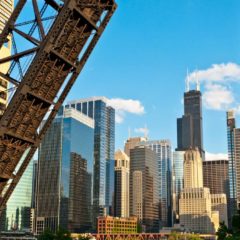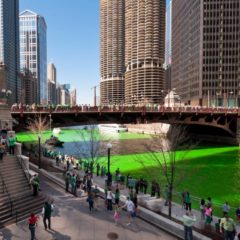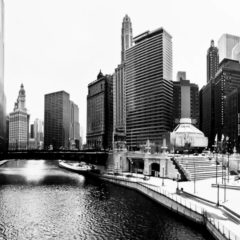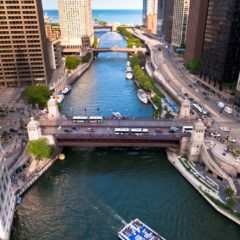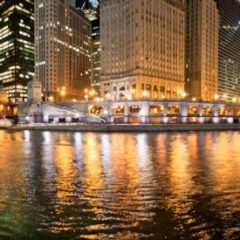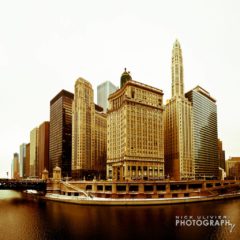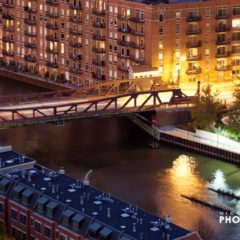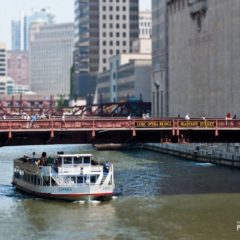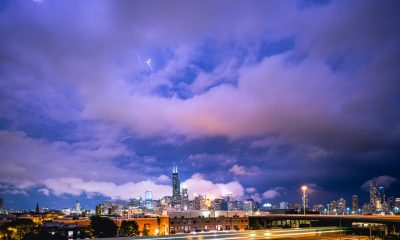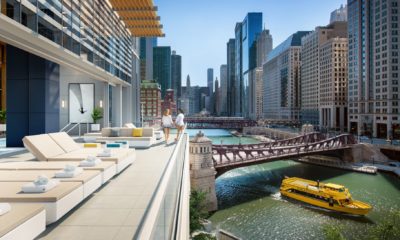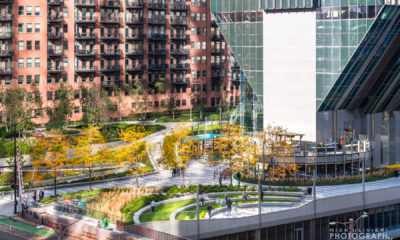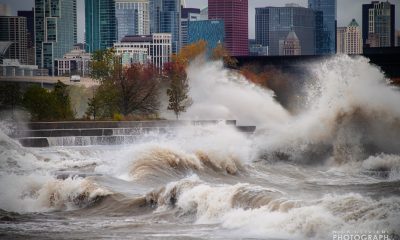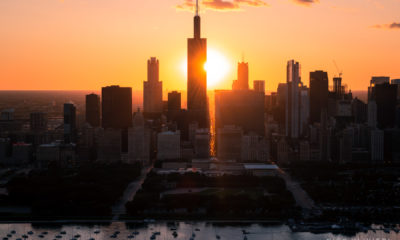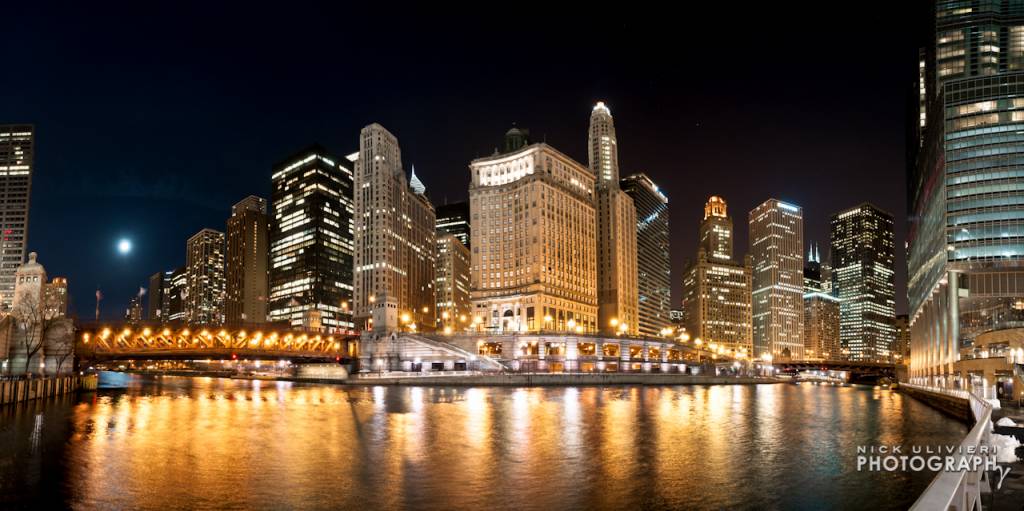
#ChicagoLandmarks – The Chicago River
Nick Ulivieri | 3.4.13
Along the banks and flood plains of natural rivers, lush ecosystems flourish with wildlife and vegetation. Chicago is no different, except that we’ve traded the mid-western forests and grasslands for a man-made jungle of concrete, steel, and glass. It’s by no accident that Chicago owes much of it’s success to the river that bears its name.
Though it was likely inhabited by Native Americans for generations, the first recorded visit to the Chicago River was back in 1673 by Louis Joliett and Jacques Marquette who marveled at the possibilities the local geography contained. By 1780’s Chicago’s first permanent resident (a.k.a “The Founder of Chicago”), Jean Baptiste Point du Sable, took root on the northern bank of the river in what is now the Pioneer Court plaza just off of Michigan Avenue.
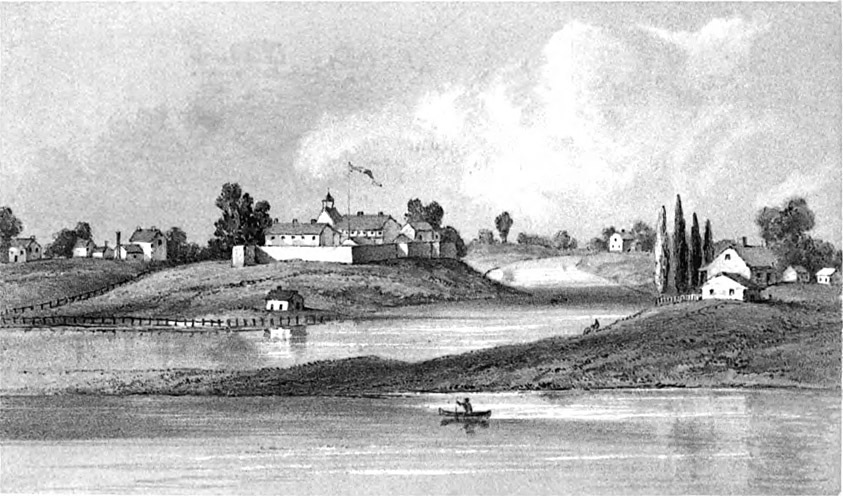 About 20 years later, in 1803, Fort Dearborn was erected on the opposite bank of the river from du Sable’s residence. The Fort stood right where Michigan Avenue and Wacker Drive intersect. Next time you’re at that intersection, look for bronze medallions implanted in the sidewalk at the Southwest and Southeast corners of the Wacker and Michigan sidewalks to see exactly where the structure stood! (To the left is an engraving by Juliette Kinzie showing Fort Dearborn as it appeared in 1831 along the mouth of the Chicago River.)
About 20 years later, in 1803, Fort Dearborn was erected on the opposite bank of the river from du Sable’s residence. The Fort stood right where Michigan Avenue and Wacker Drive intersect. Next time you’re at that intersection, look for bronze medallions implanted in the sidewalk at the Southwest and Southeast corners of the Wacker and Michigan sidewalks to see exactly where the structure stood! (To the left is an engraving by Juliette Kinzie showing Fort Dearborn as it appeared in 1831 along the mouth of the Chicago River.)
Once the Fort was built, the transformation of a natural meandering river into an engineered system of connected waterways was underway. The soldiers at the Fort were continually dredging a sandbar at the mouth of the river so supply ships could come into port. By 1833 Congress got in on the game and appropriated funds so that a more permanent port could be built along the mouth of the River – allowing larger ships to access the waterway. In 1848, another economically important change happened; The Chicago River was linked to the I&M canal and the Illinois River ulitmatley allowing access to the Mississippi River.
However, the most ambitious, and important projects in Chicago’s early history took place in 1900. This is when an effort to reverse the flow of the Chicago River would begin. At that time, the waste Chicagoans were putting into the river was draining directly into their water supply of Lake Michigan – not cool. The project, undertaken by the Sanitary District of Chicago, would alter the flow away from the Lake with a system of canals and locks. In 1999 the American Society of Civil Engineers named this project the “Civil Engineering Monument of the Millennium”.
Once the flow was reversed, the current set-up of the Chicago River system, with it’s various branches and canals has remained virtually the same. Though pollution has continued to be an issue, and the Asian Carp infestation has been troublesome, the success of the Chicago River can’t be denied. But before I conclude, here’s the scoop on how the tradition of dyeing the Chicago River came to be…
Dyeing of the River
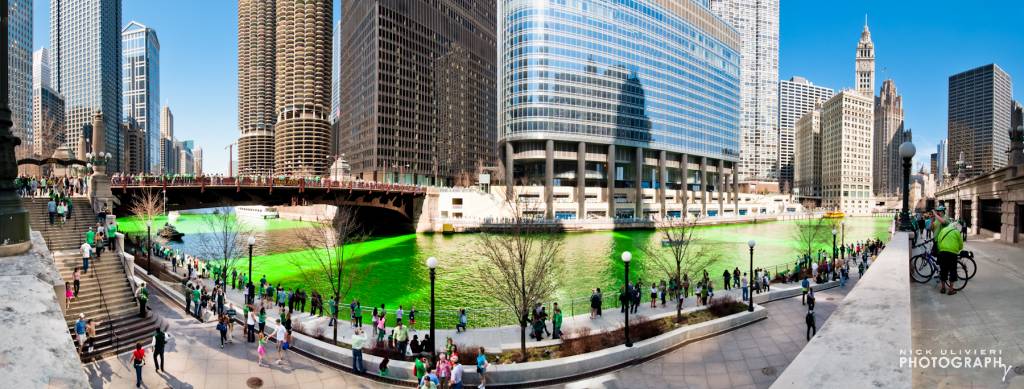
Every Chicagoan is a little Irish on St. Patrick’s Day, and the same could be said for the Chicago River which is transformed into a brilliant shade of Emerald green to celebrate the holiday. The first instance of the river’s dyeing was in 1962. The story goes something like this…Local plumbers were trying to locate and disconnect a waste pipe that illegally was draining into the river. To do this, they pumped a special green fluorescent dye through various pipes in hopes of revealing which pipe was discharging the waste. After the job, one of those plumbers, who now had dye on him, stopped into Stephen Bailey’s office to discuss plans for the upcoming St. Patrick’s Day parade. Upon seeing this perfectly green color on the plumber, Bailey, Business Manager of the Chicago Journeymen Plumbers Local Union #110, had the perfect idea – Why not dye the river green for St. Patrick’s Day?
52 years later the tradition continues and is carried out every year by The Chicago Plumbers Local Union. After many years of perfecting the process, the group now uses 40 pounds of vegetable dye while motorboats churn and mix the water to create this perfectly green spectacle on the Chicago River.
This year The Chicago River is dyed green at 10:00 am on Saturday, March 16, and the St. Patrick’s Day Parade Chicago kicks off at noon.

